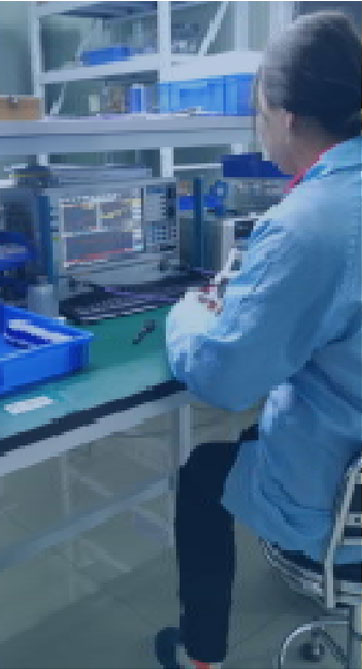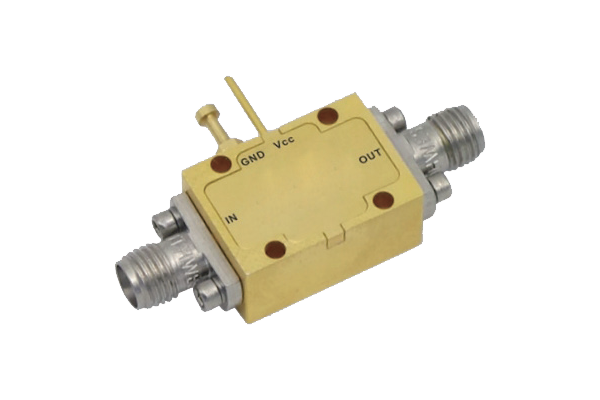
Pin diodes have become a crucial element in high-frequency systems because of their innate electrical traits Their high-speed switching performance and low capacitance along with negligible insertion loss position them well for switch modulator and attenuator implementations. The essential process enabling PIN diode switching is manipulating current through the diode using a biasing voltage. That voltage alters the depletion region width in the p n junction thereby changing conductivity. Modifying the applied bias permits PIN diodes to function at high frequencies with minimal signal distortion
For applications demanding exact timing and control PIN diodes are typically incorporated into complex circuitry They are useful in RF filtering systems for choosing which frequency bands to pass or suppress. Additionally their ability to handle elevated power levels makes them fit for amplifier power divider and generator circuits. The trend toward miniaturized highly efficient PIN diodes has broadened their applicability in modern technologies like wireless communications and radar
Performance Considerations for Coaxial Switch Engineering
Creating coaxial switches is a challenging task that demands consideration of a variety of technical parameters Switch performance is contingent on the kind of switch operational frequency and its insertion loss attributes. Optimal coaxial switches balance reduced insertion loss with enhanced isolation between connections
Performance assessment centers on return loss insertion loss and port isolation metrics. Such parameters are usually determined via simulations analytic models and physical experiments. Careful and accurate evaluation is vital to certify coaxial switch reliability in systems
- Simulations combined with analytic methods and practical experiments are standard for coaxial switch evaluation
- Temperature fluctuations impedance mismatch and manufacturing inconsistencies can strongly alter switch performance
- New advances trends and innovations in coaxial switch engineering aim to enhance performance metrics while cutting size and power consumption
Design Strategies for Low Noise Amplifiers
Optimizing the LNA’s gain efficiency and operational performance is central to maintaining signal integrity Successful optimization depends on proper transistor selection correct biasing and appropriate circuit topology. A robust LNA layout minimizes noise inputs while maximizing amplification with low distortion. Simulation based analysis is critical to understand design impacts on LNA noise performance. Striving for a minimal Noise Figure assesses success in retaining signal power while limiting noise contribution
- Picking transistors known for minimal noise contribution is essential
- Setting proper and optimal bias parameters is necessary to suppress noise in active devices
- The chosen circuit topology plays a major role in determining noise behavior
Tactics like impedance matching noise mitigation and feedback regulation advance LNA performance
PIN Diode Based RF Switching and Routing

PIN diode switches serve as practical and efficient solutions for directing RF signals in many systems Their high-speed switching lets systems dynamically alter signal routing in real time. A major advantage of PIN diodes is low insertion loss and high isolation which reduces signal degradation. Typical applications include antenna switching duplexing and RF phased arrays
Operation relies on changing the device resistance via applied control voltage to switch paths. In the off deactivated or open state the diode presents a high resistance path blocking signal flow. When a positive control voltage is applied the diode resistance decreases reduces or falls allowing RF signals to pass
- Additionally PIN diode switches present fast switching low energy use and compact dimensions
Various PIN diode network configurations and architectural designs can achieve advanced signal routing functions. Linking multiple PIN switches produces dynamic matrices that allow adaptable signal path configurations
Performance Efficacy Assessment of Coaxial Microwave Switches

Comprehensive testing evaluation and assessment of coaxial microwave switches ensure optimal performance in systems. Numerous various and diverse factors influence switch performance such as insertion reflection transmission loss isolation switching speed and bandwidth. Detailed evaluation requires measuring these parameters across a range of operating and environmental test conditions
- Furthermore moreover additionally the evaluation should consider reliability robustness and durability plus the ability to tolerate harsh environmental stresses
- Ultimately comprehensive evaluation outputs provide critical valuable and essential guidance for switch selection design and optimization for targeted uses
In-depth Review of Noise Suppression in LNA Circuits
Low noise amplifier circuits are central to RF systems for enhancing weak signals and limiting internal noise. This review article offers an in-depth examination analysis and overview of LNA noise reduction approaches. We investigate explore and discuss critical noise mechanisms like thermal shot and flicker noise. We further analyze noise matching feedback topologies and bias optimization strategies to suppress noise. It highlights recent progress including advanced semiconductor materials and novel circuit topologies that cut noise figure. By summarizing key noise suppression principles and practices the review assists engineers and researchers developing high performance RF systems
Use Cases for PIN Diodes in High Speed Switching

They possess unique remarkable and exceptional qualities beneficial for high speed switching Small capacitance together with low resistance enables rapid switching to satisfy precise timing needs. PIN diodes’ adaptive linear voltage response permits precise amplitude modulation and switching. Such versatility flexibility and adaptability renders them appropriate suitable and applicable for diverse high speed scenarios They are applied in optical communications microwave systems and signal processing equipment and devices
IC Based Coaxial Switch and Circuit Switching Technologies
Integrated coaxial switch IC designs improve signal routing processing and handling across electronic systems circuits and devices. These specialty ICs are engineered to control manage and direct signal flow through coaxial cables offering high frequency performance and low latency propagation insertion times. The miniaturized nature of IC technology produces compact efficient reliable and robust designs suitable for dense interfacing integration and connectivity demands
- By meticulously carefully and rigorously applying these methods developers can produce LNAs with superior noise performance enabling sensitive reliable electronics By meticulously carefully and rigorously applying these methods developers can produce LNAs with superior noise performance enabling sensitive reliable electronics Through careful meticulous and rigorous implementation of coaxial switch these approaches engineers can achieve LNAs with exceptional noise performance supporting sensitive reliable systems With careful meticulous and rigorous deployment of these approaches developers can accomplish LNAs with outstanding noise performance enabling trustworthy sensitive electronics
- Use cases include telecommunications data communications and wireless network infrastructures
- Integration of coaxial switch ICs serves aerospace defense and industrial automation industries
- Application examples include consumer electronics audio video products and test measurement systems
Low Noise Amplifier Design for mmWave Systems

LNA design at millimeter wave frequencies faces special challenges due to higher signal attenuation and amplified noise impacts. Parasitic effects are dominant at mmWave thus careful layout techniques and component choices are crucial. Keeping input mismatch low and power gain high is critical essential and important in mmWave LNA designs. Devices such as HEMTs GaAs MESFETs and InP HBTs are important selections to meet low noise figure goals at mmWave. Furthermore the design and optimization of matching networks is crucial to securing efficient power transfer and impedance match. Careful management of package parasitics is necessary to prevent degradation of mmWave LNA performance. Adopting low loss transmission media and careful ground plane strategies is essential necessary and important to cut reflections and retain bandwidth
PIN Diode RF Characterization and Modeling Techniques
PIN diodes are vital components elements and parts used throughout numerous RF switching applications. Accurate precise and detailed characterization of these devices is essential for designing developing and optimizing reliable high performance circuits. The work involves analyzing evaluating and examining electrical characteristics like voltage current resistance impedance and conductance. Also measured are frequency response bandwidth tuning abilities and switching speed latency or response time
Additionally moreover furthermore the development of precise models simulations and representations for PIN diodes is critical essential and vital for predicting behavior in complex RF contexts. Different modeling methods like lumped element distributed element and SPICE models exist. Which model simulation or representation to use depends on the particular application requirements and the expected required desired accuracy
Advanced Strategies for Quiet Low Noise Amplifier Design
Creating LNAs requires meticulous focus on circuit topology and component choices to secure optimal noise outcomes. New and emerging semiconductor advances have led to innovative groundbreaking sophisticated design techniques that lower noise substantially.
Among the techniques are utilizing implementing and employing wideband matching networks integrating low noise high intrinsic gain transistors and refining biasing schemes strategies and approaches. Further advanced packaging approaches together with thermal management methods play a vital role in minimizing external noise contributions. Through careful meticulous and rigorous implementation of these approaches engineers can achieve LNAs with exceptional noise performance supporting sensitive reliable systems
